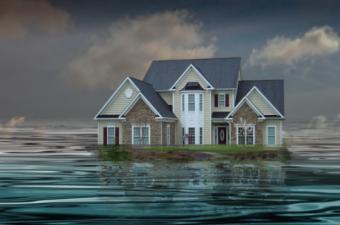The percentage of homeowners who owe more on their mortgages than their homes are worth has declined to less than 12 percent as of the third quarter of this year, according to ""Lender Processing Services' (LPS)"":http://www.lpsvcs.com/Pages/default.aspx Mortgage Monitor report. While the increasing number of homeowners rising above water is good news for the market, LPS detects some tumultuous seas ahead as a cloud of problem home equity loans forms on the horizon.
[IMAGE]The negative equity rate at the beginning of the year was 19 percent, according to LPS. The company estimates it dropped to 11.6 percent by the end of October. LPS SVP Herb Blecher explained the company's methodology for calculating the negative equity rate.
""As reports of estimated U.S. negative equity tend to vary widely, and to clarify our approach, we are applying a highly refined methodology to our calculations, accounting for not only the current combined loan [COLUMN_BREAK]
amount of first and second liens using comprehensive loan and property data, but also the impact of distressed sale discounts on loans in serious delinquency and foreclosure,"" Blecher said.
Close to half--about 48 percent--of today's outstanding home equity lines of credit (HELOCs) were originated between 2004 and 2006, and more than 75 percent were originated between 2004 and 2009. According to LPS, ""the vast majority"" of these loans are set to amortize over the next few years.
Credit scores among borrowers with HELOCs originated since 2004 are declining, based on LPS' data. For example, the average credit score for a borrower with a HELOC originated in 2007 was 744 at the time of origination. Those same borrowers today have an average credit score of 724.
This poses a threat to lenders who ""are often on the hook for almost all of 2nd lien losses,"" LPS explained. The average unpaid principal balance on these loans varies from $50,000 for loans originated in 2004 to $70,000 for loans originated in 2006 and 2007, according to LPS' data.
LPS says ""alarm bells shouldn't be going off just yet,"" but the company reasons, ""if these trends continue--the next few years could present significant risk for defaults in the home equity market.""
In its report, LPS also noted the sharp decline in the refinance share of the originations market. Refinance mortgages are down from 75 percent at the beginning of the year to about 50 percent in October.

 theMReport.com Your trusted source for mortgage banking news
theMReport.com Your trusted source for mortgage banking news









